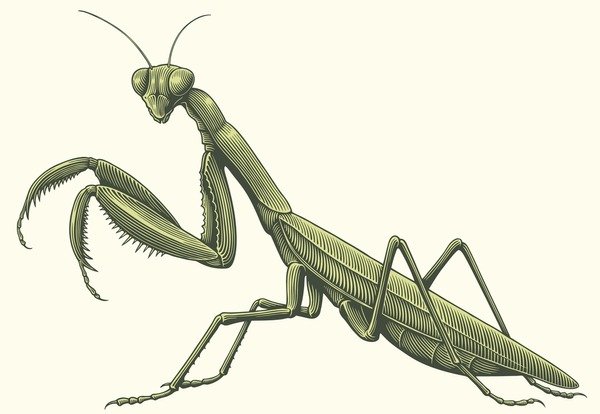Exploring The Wonders Of Campamocha: A Nature Lover’S Guide
Campamocha, a mysterious phenomenon that has left many intrigued. Said to possess the power of granting wishes, legends speak of its elusive nature. In a remote village nestled among the misty mountains, whispers of campamocha’s presence linger. Locals share tales of its enchanting allure, drawing adventurous souls seeking its transformative magic. Among the rugged terrain and ancient forests, the quest for campamocha unfolds. Will you be the one to unlock its secrets and fulfill your deepest desires? Join us on this journey into the unknown, where legends come to life.
Campamocha: The Fascinating Insect of the Rainforest
Introduction to Campamocha
Have you ever heard of the campamocha insect? These little creatures might not be as popular as butterflies or ladybugs, but they play a crucial role in the rainforest ecosystem. Today, we’re going to dive deep into the world of campamocha and uncover the secrets of this fascinating insect.
What is Campamocha?
Campamocha, also known as the leaf-footed bug, is a type of insect that belongs to the family Coreidae. They are commonly found in tropical regions, especially in the rainforests of Central and South America. These insects get their name from their unique appearance – their hind legs are flattened and leaf-like, making them look like they have extra leaves attached to their bodies.
Physical Characteristics of Campamocha
Campamocha insects come in various shapes and sizes, but they typically have elongated bodies with brown or green coloration to blend in with their natural environment. One of the most distinctive features of campamocha is their leaf-like hind legs, which help them camouflage among the vegetation. These insects have antennae that they use to sense their surroundings and locate food sources.
Habitat and Behavior
Campamocha insects prefer to live in moist and humid environments, which is why they thrive in the rainforest. They can be found on leaves, branches, and tree trunks, where they feed on plant sap using their piercing mouthparts. These insects are mainly herbivores, meaning they primarily consume plant juices, but some species may also feed on small insects.
Importance of Campamocha in the Ecosystem
While campamocha insects may seem small and insignificant, they play a crucial role in the rainforest ecosystem. As herbivores, they help regulate plant populations by feeding on excess plant material. This, in turn, maintains the balance of the ecosystem and ensures the health of the vegetation in the rainforest.
Predators and Defense Mechanisms
Like all creatures in the wild, campamocha insects have predators that pose a threat to their survival. Birds, spiders, and other insects may prey on campamocha as a source of food. To protect themselves, campamocha have developed various defense mechanisms. Some species can release a foul-smelling odor when threatened, while others may use their camouflage to blend in with their surroundings and avoid detection.
Reproduction and Life Cycle
Campamocha insects reproduce through mating, where the male fertilizes the female’s eggs. The female then lays her eggs on leaves or other surfaces, where they hatch into nymphs. These nymphs go through several stages of development before reaching adulthood. The life cycle of campamocha varies depending on the species, but it generally takes several weeks to months for them to complete their development.
Conservation of Campamocha
As with many species in the rainforest, campamocha insects face threats to their survival due to habitat loss and climate change. Conservation efforts are essential to protect these insects and preserve their role in the ecosystem. By raising awareness about the importance of campamocha and their habitat, we can work towards ensuring their continued existence for future generations to appreciate.
Ways to Support Campamocha Conservation
There are several ways we can support the conservation of campamocha insects and their rainforest habitat. One way is to participate in eco-tourism activities that promote sustainable practices and protect the environment. Supporting organizations that work towards rainforest conservation and wildlife protection is another way to make a positive impact.
Conclusion
In conclusion, campamocha insects are fascinating creatures that contribute to the diversity and balance of the rainforest ecosystem. By learning more about these insects and their importance, we can appreciate the delicate balance of nature and the interconnectedness of all living beings. Let’s continue to explore and protect the wonders of the rainforest, including the remarkable campamocha insect.
Campamocha, matacaballo, Mantis religiosa #mantisreligiosa #mantis #insectos #campo #rancho
Frequently Asked Questions
What is Campamocha?
Campamocha is a traditional Colombian dish made with roasted ants. The dish is considered a delicacy in some regions of Colombia and is known for its unique taste and high protein content.
How is Campamocha prepared?
To prepare Campamocha, the ants are usually collected from the forest, then cleaned and roasted. They are often seasoned with salt, garlic, and other spices before being consumed either as a snack or as part of a larger dish.
What does Campamocha taste like?
Campamocha is described as having a nutty and slightly tangy flavor. Some people compare the taste to roasted peanuts or crunchy bacon, although the unique flavor of the ants gives Campamocha its distinct taste.
Final Thoughts
The campamocha plant, with its striking flowers and easy care requirements, is a fantastic addition to any garden. Its vibrant colors and unique appearance can brighten up any outdoor space. Campamocha is not only aesthetically pleasing but also attracts various beneficial insects, adding to the overall biodiversity of your garden. By including campamocha in your garden, you can create a beautiful and thriving outdoor oasis.














Post Comment